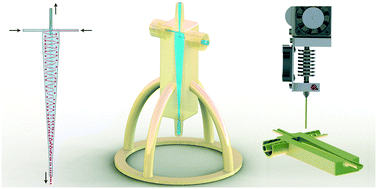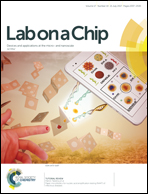A 3D-printed mini-hydrocyclone for high throughput particle separation: application to primary harvesting of microalgae†
Abstract
The separation of micro-sized particles in a continuous flow is crucial part of many industrial processes, from biopharmaceutical manufacturing to water treatment. Conventional separation techniques such as centrifugation and membrane filtration are largely limited by factors such as clogging, processing time and operation efficiency. Microfluidic based techniques have been gaining great attention in recent years as efficient and powerful approaches for particle–liquid separation. Yet the production of such systems using standard micro-fabrication techniques is proven to be tedious, costly and have cumbersome user interfaces, which all render commercialization difficult. Here, we demonstrate the design, fabrication and evaluation based on CFD simulation as well as experimentation of 3D-printed miniaturized hydrocyclones with smaller cut-size for high-throughput particle/cell sorting. The characteristics of the mini-cyclones were numerically investigated using computational fluid dynamics (CFD) techniques previously revealing that reduction in the size of the cyclone results in smaller cut-size of the particles. To showcase its utility, high-throughput algae harvesting from the medium with low energy input is demonstrated for the marine microalgae Tetraselmis suecica. Final microalgal biomass concentration was increased by 7.13 times in 11 minutes of operation time using our designed hydrocyclone (HC-1). We expect that this elegant approach can surmount the shortcomings of other microfluidic technologies such as clogging, low-throughput, cost and difficulty in operation. By moving away from production of planar microfluidic systems using conventional microfabrication techniques and embracing 3D-printing technology for construction of discrete elements, we envision 3D-printed mini-cyclones can be part of a library of standardized active and passive microfluidic components, suitable for particle–liquid separation.



 Please wait while we load your content...
Please wait while we load your content...